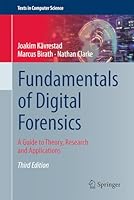
Machine Translation
- Length: 296 pages
- Edition: 1
- Language: English
- Publisher: The MIT Press
- Publication Date: 2017-09-15
- ISBN-10: 0262534215
- ISBN-13: 9780262534215
- Sales Rank: #352079 (See Top 100 Books)
A concise, nontechnical overview of the development of machine translation, including the different approaches, evaluation issues, and major players in the industry.
The dream of a universal translation device goes back many decades, long before Douglas Adams’s fictional Babel fish provided this service in The Hitchhiker’s Guide to the Galaxy. Since the advent of computers, research has focused on the design of digital machine translation tools — computer programs capable of automatically translating a text from a source language to a target language. This has become one of the most fundamental tasks of artificial intelligence. This volume in the MIT Press Essential Knowledge series offers a concise, nontechnical overview of the development of machine translation, including the different approaches, evaluation issues, and market potential. The main approaches are presented from a largely historical perspective and in an intuitive manner, allowing the reader to understand the main principles without knowing the mathematical details.
The book begins by discussing problems that must be solved during the development of a machine translation system and offering a brief overview of the evolution of the field. It then takes up the history of machine translation in more detail, describing its pre-digital beginnings, rule-based approaches, the 1966 ALPAC (Automatic Language Processing Advisory Committee) report and its consequences, the advent of parallel corpora, the example-based paradigm, the statistical paradigm, the segment-based approach, the introduction of more linguistic knowledge into the systems, and the latest approaches based on deep learning. Finally, it considers evaluation challenges and the commercial status of the field, including activities by such major players as Google and Systran.
Table of Contents
Chapter 1 Introduction
Chapter 2 The Trouble With Translation
Chapter 3 A Quick Overview Of The Evolution Of Machine Translation
Chapter 4 Before The Advent Of Computers…
Chapter 5 The Beginnings Of Machine Translation: The First Rule-Based Systems
Chapter 6 The 1966 Alpac Report And Its Consequences
Chapter 7 Parallel Corpora And Sentence Alignment
Chapter 8 Example-Based Machine Translation
Chapter 9 Statistical Machine Translation And Word Alignment
Chapter 10 Segment-Based Machine Translation
Chapter 11 Challenges And Limitations Of Statistical Machine Translation
Chapter 12 Deep Learning Machine Translation
Chapter 13 The Evaluation Of Machine Translation Systems
Chapter 14 The Machine Translation Industry: Between Professional And Mass-Market Applications
Chapter 15 Conclusion: The Future Of Machine Translation







